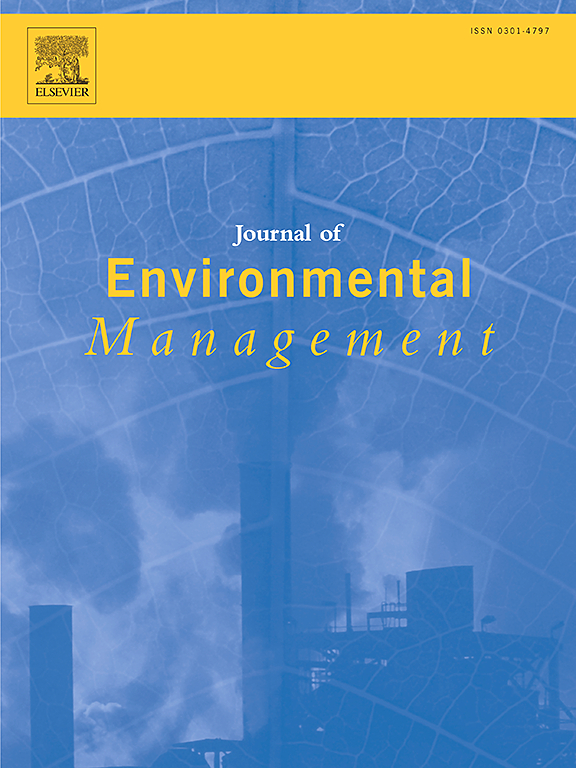Ecological compensation based on multiscale ecosystem carbon sequestration service flow
IF 8.4
2区 环境科学与生态学
Q1 ENVIRONMENTAL SCIENCES
引用次数: 0
Abstract
Scientific assessments of the supply, demand and flow of ecosystem services and the formulation of ecological compensation policies are important for the promotion of sustainable regional development. Based on the supply–demand ratio model, breakpoint model, field strength model, geographic information system spatial analysis and statistical methods, we assessed the supply, demand and supply–demand relationships of carbon sequestration services on the Loess Plateau for 2000, 2010 and 2020. We also analyzed the interregional flow of carbon sequestration services at multiple scales and accounted for horizontal ecological compensation. The results revealed that from 2000 to 2020, both the supply and demand of carbon sequestration services increased, with a greater increase in demand. The high-supply areas were mostly in the central and northwestern parts of the Loess Plateau, and the high-demand areas were mostly in areas other than the central part. The supply–demand ratio for carbon sequestration services declined, with a large increase in the number of deficit counties and surplus counties, mostly in the central and western parts of the study area. The flow rates of carbon sequestration services within the Loess Plateau increased. The intercounty flow rates within the same city were the highest but decreased. Decreasing intercity flow rates appeared within the same province although they initially increased. Finally, interprovincial flow rates were the lowest, but they were increasing. The outflow of carbon sequestration services from the Loess Plateau to external regions was greater than the inflow from external regions, but the outflow decreased in 2020 compared with 2010, while the inflow from external regions increased. Most cities actually received or paid less ecological compensation than that accounted for based on the basis of flow rates after considering willingness to pay and ability to pay. Moreover, the number and total compensation of cities receiving ecological compensation were greater than the number and total compensation of payers in the 44 cities within the Loess Plateau. This study provides a theoretical basis for not only understanding the spatial transfer patterns of ecosystem services at multiple scales but also formulating ecological compensation policies, thereby promoting the realization of regional sustainable development.
基于多尺度生态系统固碳服务流的生态补偿。
科学评估生态系统服务的供给、需求和流向,制定生态补偿政策,对于促进区域可持续发展具有重要意义。基于供需比模型、断点模型、场强模型、地理信息系统空间分析和统计方法,我们评估了 2000 年、2010 年和 2020 年黄土高原固碳服务的供给、需求和供需关系。我们还分析了多尺度的区域间固碳服务流,并考虑了横向生态补偿。结果表明,从 2000 年到 2020 年,固碳服务的供给和需求都在增加,其中需求的增幅更大。高供给区主要分布在黄土高原中部和西北部,高需求区主要分布在中部以外的地区。碳汇服务供需比下降,短缺县和过剩县数量大幅增加,主要集中在研究区的中部和西部。黄土高原内部固碳服务流量增加。同一城市内的县际流量最高,但有所下降。同一省内的城市间流量虽然起初有所上升,但随后出现下降。最后,省际流量最低,但也在增加。黄土高原向外部地区的碳汇服务流出量大于外部地区的流入量,但与 2010 年相比,2020 年的流出量减少,而外部地区的流入量增加。在考虑支付意愿和支付能力后,大多数城市实际获得或支付的生态补偿低于根据流量计算的补偿。此外,在黄土高原地区的 44 个城市中,获得生态补偿的城市数量和补偿总额均大于支付生态补偿的城市数量和补偿总额。这项研究不仅为了解生态系统服务在多尺度上的空间转移模式提供了理论依据,也为制定生态补偿政策,从而促进区域可持续发展的实现提供了理论依据。
本文章由计算机程序翻译,如有差异,请以英文原文为准。
求助全文
约1分钟内获得全文
求助全文
来源期刊

Journal of Environmental Management
环境科学-环境科学
CiteScore
13.70
自引率
5.70%
发文量
2477
审稿时长
84 days
期刊介绍:
The Journal of Environmental Management is a journal for the publication of peer reviewed, original research for all aspects of management and the managed use of the environment, both natural and man-made.Critical review articles are also welcome; submission of these is strongly encouraged.
 求助内容:
求助内容: 应助结果提醒方式:
应助结果提醒方式:


